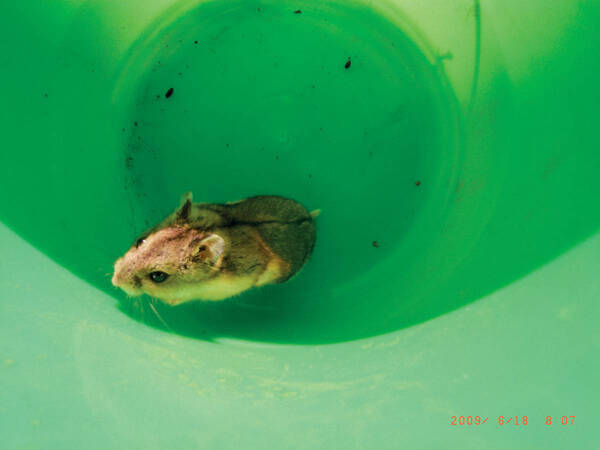Phodopus campbelli
IUCN
LCBasic Information
Scientific classification
- name:Phodopus campbelli
- Scientific Name:Phodopus campbelli,Campbell's desert hamster,Campbell hamster, first-line hamster
- Outline:Rodents
- Family:Rodentia Cricetidae Trichopoda
Vital signs
- length:88-103mm
- Weight:23.4g
- lifetime:1.5-3years
Feature
The hairy-footed hamster is the smallest group in the subfamily of hamsters, and its main identifying feature is its very short tail.
Distribution and Habitat
In China, it is distributed in Inner Mongolia and Xinjiang, with sporadic records in Heilongjiang. Abroad, it is distributed in Russia, Mongolia and Kazakhstan.
It inhabits grasslands, semi-deserts, deserts, dunes and mountains. It is more likely to be found on soils with harder substrates than the small hairy-footed mouse.
Appearance
The individual is small, with an average body length of about 90mm (88-103mm). The tail is very short, less than 14mm, shorter than the length of the hind leg, which is 12-18mm. The ear length is medium, 13-15mm. The dorsal hair is grayish white to dark gray, and the overall hair color is lighter and brushed with light yellow. There is a distinct black line in the center of the back, sometimes black-brown, running through the entire back. The ventral side is pure white. The dorsal and ventral hair color boundaries are obvious, but not straight, and are wavy. Moreover, the ventral hair color protrudes to the back, forming 3 grayish white spots on the side. The first one is above the forelimbs, the second one is on the ventral side, and the third one is on the upper front of the hind limbs. The ear edge is grayish white, and the front of the ear is covered with short grayish white hair. The back and back of the body are the same color. There is usually a grayish white or grayish brown sp
Details
Campbell's hairy-footed mouse belongs to the subfamily Cricetinae. Hairy-footed mouse is the smallest group in the subfamily Cricetinae. Its main identification feature is that its tail is very short, less than 14mm, and the soles of its feet are covered with dense hair. The tail length of other hamsters is more than 14mm, and the soles of their feet are more or less exposed. The hair is also sparse. There is some controversy in classification. Campbell's hairy-footed mouse was once regarded as a subspecies of black-lined hairy-footed mouse (<Phodopus sungorus>). However, there is a difference in color between the two. The back of the black-lined hairy-footed mouse is mainly brown-black, the base of the hair on the ventral side is gray, and the hair tips are gray-white, which is different from this species. The distribution area does not overlap. The black-lined hairy-footed mouse is distributed in Siberia, Russia. Ecologically, Campbell's hairy-footed mouse is a typical member of desert and semi-desert steppes.

Campbell's hairy-footed hamsters, like other members of the subfamily Cricetinae, live in an underground tunnel system. Campbell's hamster burrows are usually composed of four to six main tunnels, both horizontally and vertically. The nest is usually built at the end of the tunnel and is composed of dry and insulating materials, including but not limited to grass, feathers, and wool. Seeds and nuts are often found very close to the nest. The burrow (4-6 vertical entrances) leads to a nest chamber up to 1 meter deep (but usually shallower) and a seed food cache. May occupy the burrows of gerbils instead of digging their own.
The sensory channels are vision, hearing and touch, and of all the senses, they rely mainly on smell. Wild Campbell hamsters, both male and female, can use urine and feces to identify territory. In addition, secretions from the ventral sebaceous glands and Hadrian's glands located behind the ears are not only used for regional identification, but also for communication. Its oral sebaceous glands are also used to mark all contents entering or leaving the cheek pouch.

Active at night or dusk, does not hibernate. Feeds on leaves, bark or stems, seeds, flowers, grains, nuts, fruits, insects and mollusks.
Wild Campbell species reproduce 3-5 times per year, with a range of 1 to 12 offspring per litter, with an average of 8.
There is no accurate data on the population, but it is abundant in some areas and is considered a species that harms crops.
Listed in the 2016 IUCN Red List of Threatened Species, ver 3.1 - Least Concern (LC).








